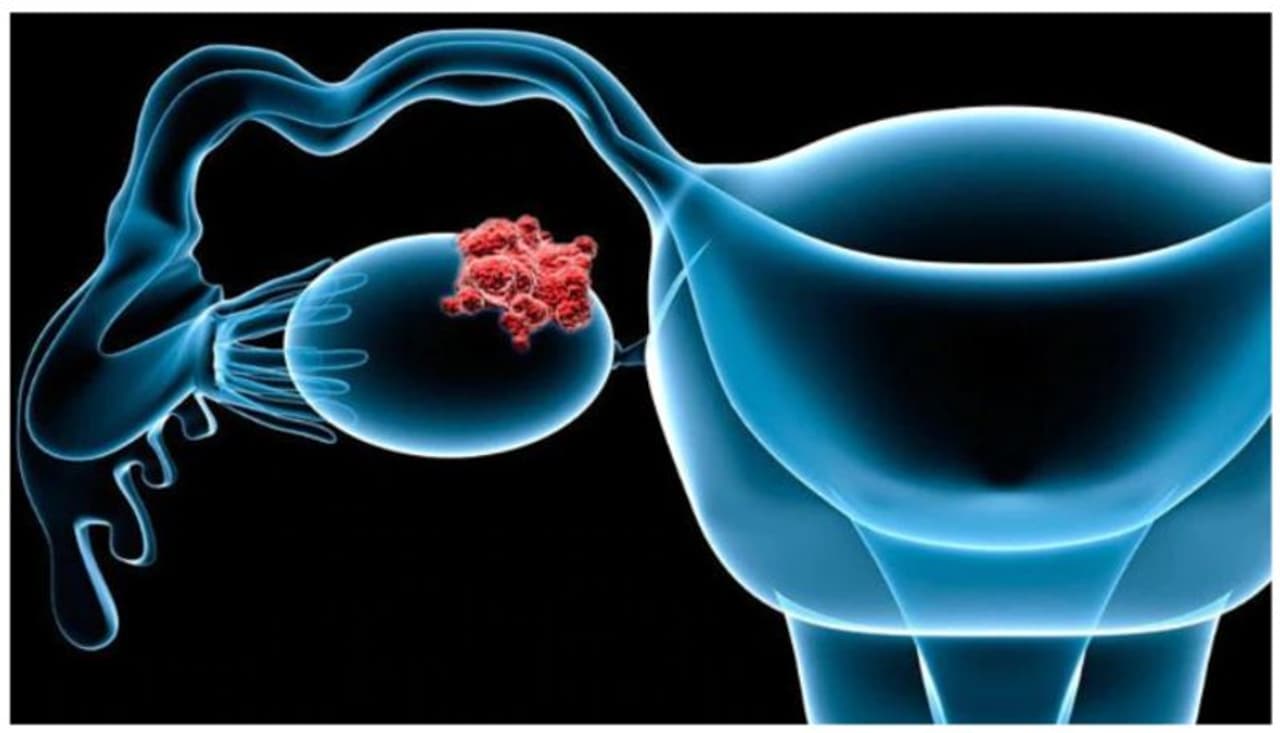Ovarian cancer, a fast growing cluster of cells in the ovaries, is known as the "silent killer" because it goes undiscovered until it progresses to an advanced stage, at which point treatment choices become restricted and results less favourable.
Cancer is a widely dreaded disease, often going undiagnosed until it reaches advanced stages. This delay in detection can have severe implications, such as a later stage of diagnosis, thereby losing the precious chance for a cure. Many cancers lack early warning signs, or their symptoms are easily mistaken for less serious conditions, contributing to the difficulty of early detection.

Ovarian cancer, a rapidly growing cluster of cells in the ovaries, is often called the "silent killer" as it tends to go unnoticed until it reaches an advanced stage when treatment options become limited and outcomes less favourable. Early detection is key to better patient outcomes, emphasizing the need for greater awareness, and open communication with healthcare professionals.
What are the symptoms of Ovarian Cancer?
Ovarian cancer may not exhibit any straightforward symptoms when it first appears, but the symptoms of ovarian cancer are typically misdiagnosed as other, more prevalent illnesses. A few warning signs include:
- Bloating or swelling in the abdomen
- feeling of having full stomach after small meal.
- Loss of weight
- discomfort in the lower abdomen
- Weary
- back discomfort
- alterations in digestive patterns, such as constipation
- a constant urge to urinate

What causes Ovarian Cancer?
While the precise cause of ovarian cancer remains unknown, certain risk factors have been identified by research. Genetic alterations near or within the ovaries are considered an early trigger for this disease. In cancer, cells have imbalanced function at DNA level, leading to rapid growth and replication, forming tumors. Unlike healthy cells, malignant ones evade normal cell death processes, spreading to nearby tissues and potentially metastasizing to distant body parts.
What are some of the risk factors?
While knowing the root cause of ovarian cancer is not yet possible, we are aware of a few risk factors leading to this silent killer’s growth.
- Old age: This type of cancer is predominantly diagnosed in older women, with the risk increasing as people age.
- Nulliparity: Not having any child birth.
- Inherited gene modifications: A small percentage of ovarian cancer cases are due to genetic mutations inherited from parents. Genes like BRCA1 and BRCA2 are known to significantly increase the risk of developing ovarian cancer.
- Family history: You might be at higher risk of developing ovarian cancer if you have blood relatives who have been diagnosed with the illness.
- Postmenopausal hormone replacement therapy: Using hormone replacement therapy to manage menopause symptoms and signs may increase the risk of ovarian cancer.
- Obesity: This is also considered a key risk factor leading to ovarian cancer in many cases, specifically along with polycystic ovarian syndrome.

Preventative Measures
While there are no proven ways to prevent ovarian cancer there are a few ways to reduce the risk.
- Using birth control pills: Taking birth control pills has been linked to a lower risk of ovarian cancer, but it's crucial to consult your doctor before beginning any contraceptive regimen.
- Understanding family history: One must discuss with their physician any family history of ovarian and breast cancer, as this can help determine the risk of developing these cancers. If genetic testing reveals a mutation that significantly increases the risk of ovarian cancer, one might want to consider surgical removal of the ovaries fallopian tubes as a preventive measure.
- Consider breastfeeding: Breastfeeding may lower ovarian cancer risk by delaying ovulation. Frequent ovulation exposes ovarian cells to repeated damage, potentially increasing cancer risk. Breastfeeding hormones can suppress ovulation, offering some protection from ovarian cancer.
- Prescribed medication: Hormone-modulating prescription drugs such as OCs are one of the primary modality for preventing ovarian cancers.

Diagnosis and Treatment
A variety of tests and procedures can be used to diagnose ovarian cancer, including Pap smears, pelvic exams, imaging, genetic testing, Transvaginal ultrasounds (TVUS), and the CA-125 blood test. Once ovarian cancer is confirmed, the doctor will determine its stage to guide treatment options. Treatment may involve surgery to remove one or both ovaries and the uterus, and for more advanced cases, chemotherapy is often recommended as part of the treatment plan along with surgery.
In conclusion, advocacy is much more than personal action; it involves collective effort. Persistent vague abdominal symptoms, not getting relieved with routine medication should be sought for specialist health visit. By combining personal vigilance, support from healthcare professionals, and continued research, we can enhance early detection and potentially save numerous lives. By advocating for early detection of ovarian cancer, we empower women to take control of their health and increase their chances of overcoming this challenging disease.
-Dr.Seshagiri Rao Ganta, Consultant-Medical Oncology, HCG NMR Cancer Centre, Hubli
